 Search by Keyword
Sign Up Below for our MONTHLY BEATLES TRIVIA QUIZ!
|
"I'LL FOLLOW THE SUN"
(John Lennon - Paul McCartney)
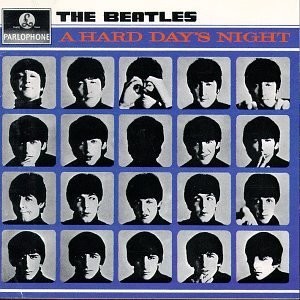 In mid October of 1964, The Beatles were in a jam. They were contracted to have a new single and an entire new album complete and in the stores in time for the Christmas shopping season. Their last album "A Hard Day's Night" had just reached the record shops three months earlier, but it was predicted, and rightfully so, that Beatles fans already owned this album and were eagerly awaiting new material for the end of the year. In mid October of 1964, The Beatles were in a jam. They were contracted to have a new single and an entire new album complete and in the stores in time for the Christmas shopping season. Their last album "A Hard Day's Night" had just reached the record shops three months earlier, but it was predicted, and rightfully so, that Beatles fans already owned this album and were eagerly awaiting new material for the end of the year.
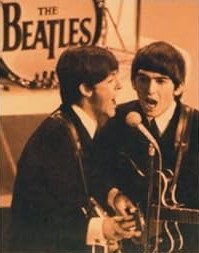 The problem was that the group was too busy. They had just completed their first extensive American tour and were in the middle of an international tour as well. They had squeezed in a few recording dates but had only completed seven contenders for the sixteen required songs. The decision was made to include some of their favorite cover songs, but they still needed to write more material themselves. The problem was that the group was too busy. They had just completed their first extensive American tour and were in the middle of an international tour as well. They had squeezed in a few recording dates but had only completed seven contenders for the sixteen required songs. The decision was made to include some of their favorite cover songs, but they still needed to write more material themselves.
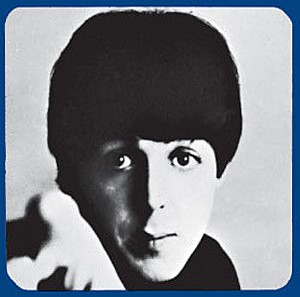 Being under this kind of pressure led them to purge their memories for songs they may have written years ago but never got around to doing anything with. "There were certain songs I had from way back that I didn't really finish up," McCartney relates, "but they were in the back of my mind...'I'll Follow The Sun' was one of those." Being under this kind of pressure led them to purge their memories for songs they may have written years ago but never got around to doing anything with. "There were certain songs I had from way back that I didn't really finish up," McCartney relates, "but they were in the back of my mind...'I'll Follow The Sun' was one of those."
 The fact that the song was written many years prior to 1964 proves that Paul was born with the gift of writing memorable melodies. The result became what producer George Martin described as his favorite song on the "Beatles For Sale" album. While "I'll Follow The Sun" may only have been recorded because of an album deadline, it is anything but "filler" material. The fact that the song was written many years prior to 1964 proves that Paul was born with the gift of writing memorable melodies. The result became what producer George Martin described as his favorite song on the "Beatles For Sale" album. While "I'll Follow The Sun" may only have been recorded because of an album deadline, it is anything but "filler" material.
Songwriting History
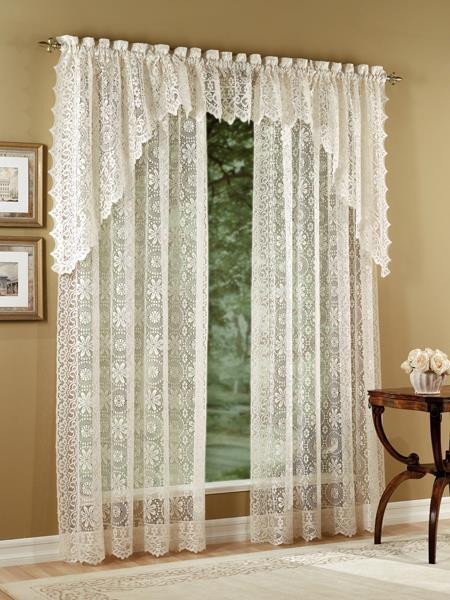 "I wrote that in my front parlour in Forthlin Road. I was about 16," McCartney stated in an interview. This would date the song as being written as far back as 1958. He continues, "So, 'I'll Follow The Sun' was one of those very early ones. I seem to remember writing it just after I'd had the flu...I remember standing in the parlour looking out through lace curtains of the window and writing that one." "I wrote that in my front parlour in Forthlin Road. I was about 16," McCartney stated in an interview. This would date the song as being written as far back as 1958. He continues, "So, 'I'll Follow The Sun' was one of those very early ones. I seem to remember writing it just after I'd had the flu...I remember standing in the parlour looking out through lace curtains of the window and writing that one."
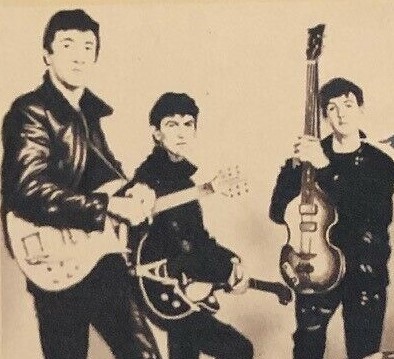 As to whether John had any part of its writing, available interviews show it was little if any at all. McCartney did state the following early on: "John and I wrote this one some while ago, but we changed the middle eight bars before we actually recorded it." Lennon, though, disclaims this in a 1980 quote, saying about the song, "That's Paul again. Can't you tell, I mean 'Tomorrow may rain so I'll follow the sun.' That's another early McCartney, you know...written almost before The Beatles, I think. He had a lot of stuff." As to whether John had any part of its writing, available interviews show it was little if any at all. McCartney did state the following early on: "John and I wrote this one some while ago, but we changed the middle eight bars before we actually recorded it." Lennon, though, disclaims this in a 1980 quote, saying about the song, "That's Paul again. Can't you tell, I mean 'Tomorrow may rain so I'll follow the sun.' That's another early McCartney, you know...written almost before The Beatles, I think. He had a lot of stuff."
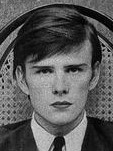 There is a recording in existence (available on bootlegs) of the early Beatles, known then as The Quarrymen, performing the song. The electric guitar arrangement features Paul, John and George on guitar with Stuart Sutcliffe on bass and presumably Tommy Moore on drums. According to McCartney, who purchased the tape from Peter Hodgson in 1995, the recording dates back to April of 1960 and was made in the bathroom of his home at 20 Forthlin Road during a school holiday. McCartney's recollection of the "middle eight" being re-written before they recorded it professionally is confirmed by this early rough recording, because the lyrics of this middle section appears to say "Well, don't leave me alone, I need you/ Now hurry and follow me, my dear." There is a recording in existence (available on bootlegs) of the early Beatles, known then as The Quarrymen, performing the song. The electric guitar arrangement features Paul, John and George on guitar with Stuart Sutcliffe on bass and presumably Tommy Moore on drums. According to McCartney, who purchased the tape from Peter Hodgson in 1995, the recording dates back to April of 1960 and was made in the bathroom of his home at 20 Forthlin Road during a school holiday. McCartney's recollection of the "middle eight" being re-written before they recorded it professionally is confirmed by this early rough recording, because the lyrics of this middle section appears to say "Well, don't leave me alone, I need you/ Now hurry and follow me, my dear."
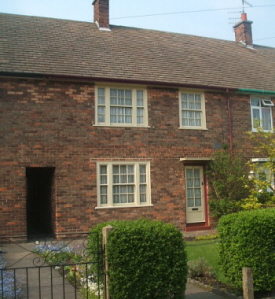 McCartney himself changed his original story when writing for his book "Many Years From Now." "I remember writing that in our front living room at Forthlin Road on my own so that's pretty much all mine." Either way, "I'll Follow The Sun" appears to be primarily a McCartney number that was mostly written in 1958 but finished up just before being recorded at EMI six years later. McCartney himself changed his original story when writing for his book "Many Years From Now." "I remember writing that in our front living room at Forthlin Road on my own so that's pretty much all mine." Either way, "I'll Follow The Sun" appears to be primarily a McCartney number that was mostly written in 1958 but finished up just before being recorded at EMI six years later.
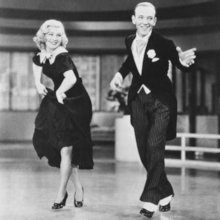 As for the lyrics and structure of the song, Paul explains in his book "The Lyrics": "When you think about it, it's a 'Leaving of Liverpool' song. I'm leaving this rainy northern town for someplace where more is happening. It's an interesting melody too. I'd been searching for striking new combinations of notes. There's something quite original about it. One of my favorite songs of my dad's era was 'Cheek To Cheek,' the Fred Astaire song, and what I liked was that it starts with 'Heaven, I'm in heaven,' and it goes through two verses and comes back at the end of the middle eight to 'heaven.' It's a single sentence. It was like our house in Forthlin Road. You went in the front door, went around through the living room, dining room, kitchen, hall, and ended up back where you started. 'I'll Follow The Sun' does that too." As for the lyrics and structure of the song, Paul explains in his book "The Lyrics": "When you think about it, it's a 'Leaving of Liverpool' song. I'm leaving this rainy northern town for someplace where more is happening. It's an interesting melody too. I'd been searching for striking new combinations of notes. There's something quite original about it. One of my favorite songs of my dad's era was 'Cheek To Cheek,' the Fred Astaire song, and what I liked was that it starts with 'Heaven, I'm in heaven,' and it goes through two verses and comes back at the end of the middle eight to 'heaven.' It's a single sentence. It was like our house in Forthlin Road. You went in the front door, went around through the living room, dining room, kitchen, hall, and ended up back where you started. 'I'll Follow The Sun' does that too."
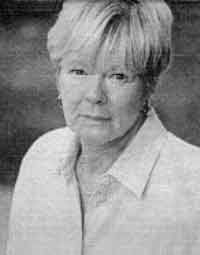 While the passing of over six decades may have clouded his memories, it should not be discounted that these lyrics may be depicting his thoughts of leaving dreary Liverpool behind and, in the process, leaving behind his first sweetheart, Dot Rhone, whom he dated, as Bill Harry wrote in his book "The Ultimate Beatles Encyclopedia," "for several years from the end of the fifties until late in 1962." While the passing of over six decades may have clouded his memories, it should not be discounted that these lyrics may be depicting his thoughts of leaving dreary Liverpool behind and, in the process, leaving behind his first sweetheart, Dot Rhone, whom he dated, as Bill Harry wrote in his book "The Ultimate Beatles Encyclopedia," "for several years from the end of the fifties until late in 1962."
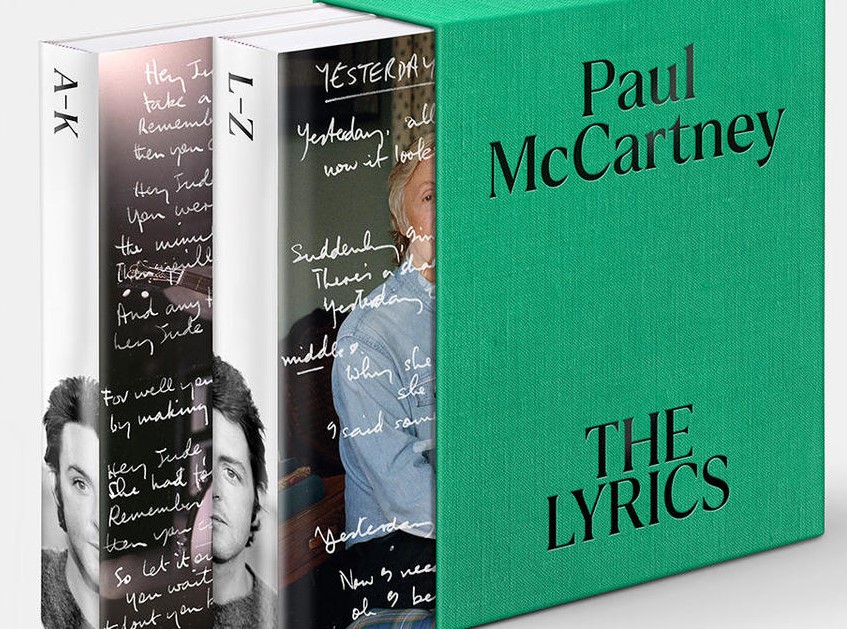 "Even if we were open to influencers," Paul continues in his book "The Lyrics," "one of the great things about The Beatles was our aversion to repeating ourselves. We were intelligent young lads; we didn't like being bored...When we started making records, that idea persisted. Why repeat ourselves? Why make the same record twice? It's true that...there was a certain formula to some of the early songs - the recurrence of the pronouns 'I,' 'you,' 'me,' 'him,' 'her,' 'my,' 'she' - but that was because we wanted to be in contact with the fans. To engage with them. But they weren't formulaic. What made The Beatles such a great band was that no two tracks are the same. It's pretty amazing when you think of that output." Paul's reference to pronouns insinuates that as early as 1958 when "I'll Follow The Sun" began being written, being in contact with future potential fans was already a consideration during songwriting. "Even if we were open to influencers," Paul continues in his book "The Lyrics," "one of the great things about The Beatles was our aversion to repeating ourselves. We were intelligent young lads; we didn't like being bored...When we started making records, that idea persisted. Why repeat ourselves? Why make the same record twice? It's true that...there was a certain formula to some of the early songs - the recurrence of the pronouns 'I,' 'you,' 'me,' 'him,' 'her,' 'my,' 'she' - but that was because we wanted to be in contact with the fans. To engage with them. But they weren't formulaic. What made The Beatles such a great band was that no two tracks are the same. It's pretty amazing when you think of that output." Paul's reference to pronouns insinuates that as early as 1958 when "I'll Follow The Sun" began being written, being in contact with future potential fans was already a consideration during songwriting.
As to why they waited so long to bring this song out, McCartney gives us a clue. "We had this hard R&B image in Liverpool, so I think songs like 'I'll Follow The Sun,' ballads like that, got pushed back to later."
Recording History
The long nine-hour recording session held on October 18th, 1964 saw seven songs from beginning to completion, as well as putting the finishing touches on a previously recorded track. Among the songs completed on this day was "I'll Follow The Sun."
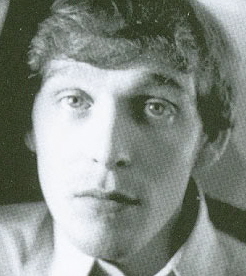 The session began at 2:30 pm in EMI Studio Two and started off with edit pieces being recorded for "Eight Days A Week" followed by recording "Kansas City/Hey-Hey-Hey-Hey!", "Mr. Moonlight" and "I Feel Fine," which would become their next single. At approximately 8:30 pm, while roadie Neil Aspinall was out getting some fish and chips for the group, they started working on "I'll Follow The Sun." The session began at 2:30 pm in EMI Studio Two and started off with edit pieces being recorded for "Eight Days A Week" followed by recording "Kansas City/Hey-Hey-Hey-Hey!", "Mr. Moonlight" and "I Feel Fine," which would become their next single. At approximately 8:30 pm, while roadie Neil Aspinall was out getting some fish and chips for the group, they started working on "I'll Follow The Sun."
 Eight takes of the full band arrangement (many of them ending with eruptions of laughter) were required before everyone was satisfied, but a couple of adjustments needed to be made as the session progressed. Engineer Geoff Emerick explains: "At first they couldn't think of anything for Ringo to do - he played drums on a run-through, but it sounded all wrong, too aggressive and distracting; Paul wanted something more subtle. After a good deal of discussion, Paul came up with the idea of having Ringo just slap his legs in time, and that worked well. Enthralled, I watched (engineer) Norman (Smith) carefully position a mic between Ringo's knees; then, back in the control room, he cranked up the EQ to add some extra depth to the sound." Eight takes of the full band arrangement (many of them ending with eruptions of laughter) were required before everyone was satisfied, but a couple of adjustments needed to be made as the session progressed. Engineer Geoff Emerick explains: "At first they couldn't think of anything for Ringo to do - he played drums on a run-through, but it sounded all wrong, too aggressive and distracting; Paul wanted something more subtle. After a good deal of discussion, Paul came up with the idea of having Ringo just slap his legs in time, and that worked well. Enthralled, I watched (engineer) Norman (Smith) carefully position a mic between Ringo's knees; then, back in the control room, he cranked up the EQ to add some extra depth to the sound."
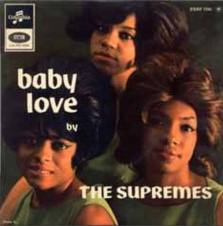 Paul explains further about this idea. "On the record we got Ringo to tap his knees. We were thinking in terms of singles and the next one had to always be different. We didn't want to fall into The Supremes trap where they all sounded rather similar, so to the end, we were always keen on having varied instrumentation. Ringo couldn't keep changing his drum kit, but he could change his snare, tap a cardboard box or slap his knees." Paul explains further about this idea. "On the record we got Ringo to tap his knees. We were thinking in terms of singles and the next one had to always be different. We didn't want to fall into The Supremes trap where they all sounded rather similar, so to the end, we were always keen on having varied instrumentation. Ringo couldn't keep changing his drum kit, but he could change his snare, tap a cardboard box or slap his knees."
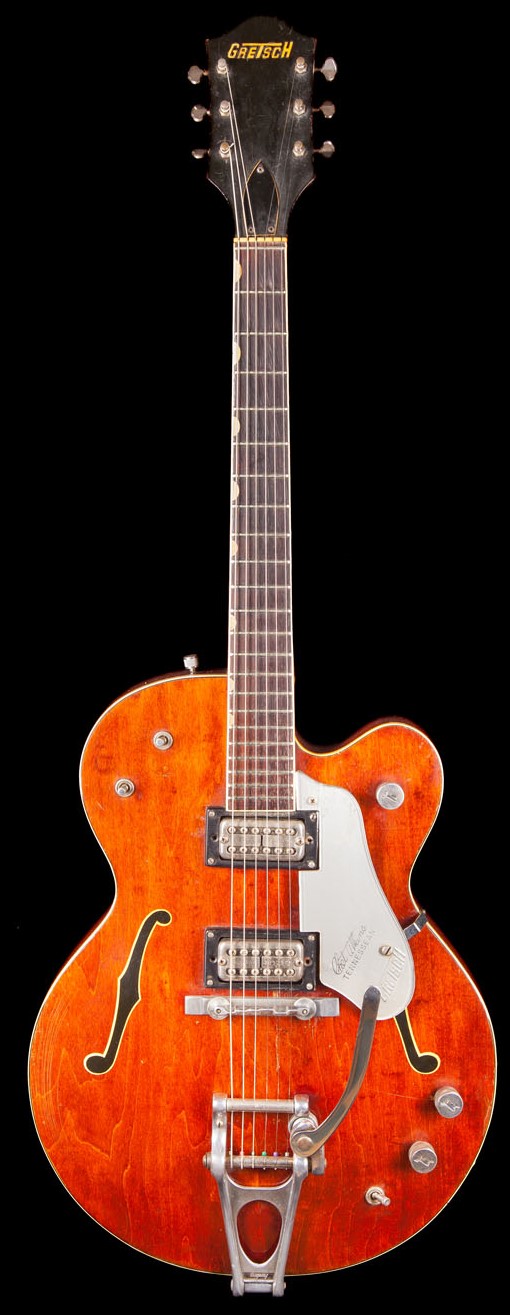 Another adjustment had to do with the simple guitar solo. Geoff Emerick continues: "I found George Harrison's simpleminded eight-note solo - not even a solo, really just the melody line - downright embarrassing. He wasn't even supposed to play that solo: for the first few takes, John did it, on acoustic guitar. Despite the overall good vibe of the day, George Harrison seemed annoyed, perhaps because he hadn't been given much to do. At one point he marched into the control room and complained loudly, 'You know, I'd like to do the solo on this one. I am supposed to be the lead guitarist in this band, after all.'" Another adjustment had to do with the simple guitar solo. Geoff Emerick continues: "I found George Harrison's simpleminded eight-note solo - not even a solo, really just the melody line - downright embarrassing. He wasn't even supposed to play that solo: for the first few takes, John did it, on acoustic guitar. Despite the overall good vibe of the day, George Harrison seemed annoyed, perhaps because he hadn't been given much to do. At one point he marched into the control room and complained loudly, 'You know, I'd like to do the solo on this one. I am supposed to be the lead guitarist in this band, after all.'"
George Martin reluctantly interceded for Harrison who was finally allowed to play the solo as an overdub. "Nobody was satisfied with the result," Geoff Emerick concludes, "he wasn't happy either and wanted to make another attempt at it, but a weary and slightly annoyed George Martin finally put his foot down, saying, 'No, we have to move on.'"
 An effective touch to the recording was John's descending harmony lines in the bridge, or "middle-eight" as The Beatles would call them. According to engineer Geoff Emerick's book "Here, There and Everywhere," George Martin took the time to write this counter-melody for John to sing and taught it to him that day. After Paul double-tracked his vocals during the first half of each verse onto "take eight," the song was complete. Being around 9:30, it was time for a tea break and then back to record three more songs before midnight. An effective touch to the recording was John's descending harmony lines in the bridge, or "middle-eight" as The Beatles would call them. According to engineer Geoff Emerick's book "Here, There and Everywhere," George Martin took the time to write this counter-melody for John to sing and taught it to him that day. After Paul double-tracked his vocals during the first half of each verse onto "take eight," the song was complete. Being around 9:30, it was time for a tea break and then back to record three more songs before midnight.
The mono mix of "I'll Follow The S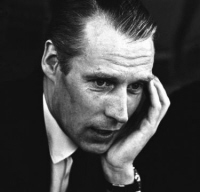 un" was made three days later on October 21st, 1964 in Room 65 of Abbey Road Studios. The vocals were left mostly dry, with just a touch of added reverb. George Martin, Norman Smith and 2nd engineer Ron Pender were the only personnel in attendance for this mixing session. un" was made three days later on October 21st, 1964 in Room 65 of Abbey Road Studios. The vocals were left mostly dry, with just a touch of added reverb. George Martin, Norman Smith and 2nd engineer Ron Pender were the only personnel in attendance for this mixing session.
 The stereo mix was made on November 4th, 1964 in the control room of EMI Studio Two by George Martin, Norman Smith and 2nd engineer Mike Stone. This time around, they added quite a bit of reverb to accentuate the vocals. The stereo mix was made on November 4th, 1964 in the control room of EMI Studio Two by George Martin, Norman Smith and 2nd engineer Mike Stone. This time around, they added quite a bit of reverb to accentuate the vocals.
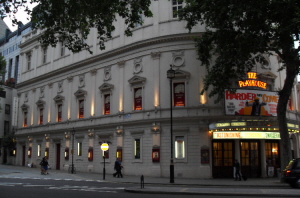 The Beatles recorded "I'll Follow The Sun" once again on November 17th, 1964 at Playhouse Theatre in London between 7:30 and 11:30pm for BBC radio, this being produced by Bernie Andrews. The recording was then broadcast on the radio show "Top Gear" on November 26th of that year between 10 am and 12 noon, this being ten days before the "Beatles For Sale" album containing the song was to hit British record stores. The Beatles recorded "I'll Follow The Sun" once again on November 17th, 1964 at Playhouse Theatre in London between 7:30 and 11:30pm for BBC radio, this being produced by Bernie Andrews. The recording was then broadcast on the radio show "Top Gear" on November 26th of that year between 10 am and 12 noon, this being ten days before the "Beatles For Sale" album containing the song was to hit British record stores.
Then, on June 27th, 2007, Paul performed "I'll Follow The Sun" in Hollywood, California for a secret show at Amoeba Music, this being recorded and eventually released in 2019 on the album "Amoeba Gig."
Song Structure and Style
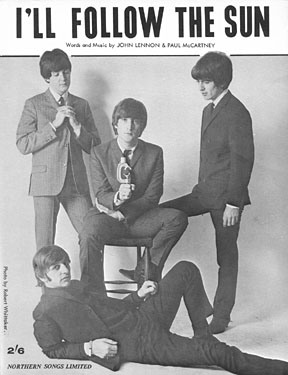 The structure used in "I'll Follow The Sun" is one very familiar to The Beatles up to this point, consisting of a 'verse/ verse/ bridge/ verse' format (or aaba). After another verse follows, which is actually half solo / half verse, a repeat of the bridge and final verse finishes off the song. The structure used in "I'll Follow The Sun" is one very familiar to The Beatles up to this point, consisting of a 'verse/ verse/ bridge/ verse' format (or aaba). After another verse follows, which is actually half solo / half verse, a repeat of the bridge and final verse finishes off the song.
The brief two measure introduction, with George Harrison's picking guitar riff, is actually a preview of the final two measures of the first and third verse. The first verse, like all of them, is a standard eight measures long and features Paul's double-tracked vocals in the first four measures and single-tracked vocals in the last four measures. The awkward chord pattern used in the first four measures makes it hard to determine the home key, but we comfortably arrive there (in the key of C) as the fifth measure appears.
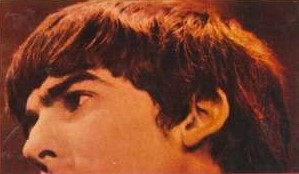 After the verse concludes with Harrison's guitar riff, a structurally identical second verse follows. The only difference here, other than different lyrics in the first four measures, is the chording in the last two measures, which alter the key chord to a "seventh" as a segue to the bridge. After the verse concludes with Harrison's guitar riff, a structurally identical second verse follows. The only difference here, other than different lyrics in the first four measures, is the chording in the last two measures, which alter the key chord to a "seventh" as a segue to the bridge.
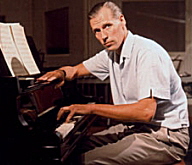 The bridge is also eight measures long but differs vocally from the verses by the appearance of John's lower harmonies as suggested and written by George Martin. Although both of the melodic phrases in the bridge conclude at the home key, the final measure moves abruptly to an unexpected chord to segue back into the awkward chord pattern of the third verse. This third verse is almost identical to the first verse except for a few words, the first verse beginning with "one day you'll look to see I've gone" and the third verse beginning with "one day you'll find that I have gone." The bridge is also eight measures long but differs vocally from the verses by the appearance of John's lower harmonies as suggested and written by George Martin. Although both of the melodic phrases in the bridge conclude at the home key, the final measure moves abruptly to an unexpected chord to segue back into the awkward chord pattern of the third verse. This third verse is almost identical to the first verse except for a few words, the first verse beginning with "one day you'll look to see I've gone" and the third verse beginning with "one day you'll find that I have gone."
 We then move into another verse which contains the simple eight-note sliding guitar solo from George Harrison in the first four measures. The remainder of the verse brings back the single-tracked vocals from Paul to once again highlight the title of the song. This verse also ends with a "seventh" chord because of it preceding a repeat of the bridge. This second bridge is followed by a repeat of the third verse, which concludes the song after the finger-picking riff from George Harrison. We then move into another verse which contains the simple eight-note sliding guitar solo from George Harrison in the first four measures. The remainder of the verse brings back the single-tracked vocals from Paul to once again highlight the title of the song. This verse also ends with a "seventh" chord because of it preceding a repeat of the bridge. This second bridge is followed by a repeat of the third verse, which concludes the song after the finger-picking riff from George Harrison.
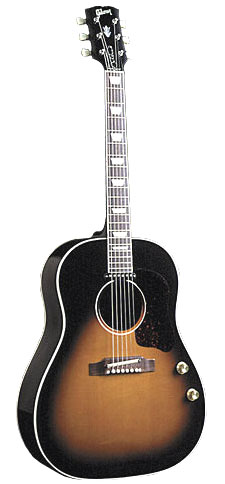 The emphasis isn't on the musicianship of the group per se, but on the song itself. Nonetheless, all four Beatles play their part with enough skill to convincingly depict the charming sentiments of the song. Paul's simple bass lines don't do much more than emphasize the chord changes, while his vocals are predictably right on pitch. The higher register singing in the bridge is noteworthy for credit, especially as a counterpoint to Lennon's lower harmonies, which are also executed easily but perfectly. Lennon's acoustic rhythm guitar work is played somewhat aggressively but is well executed nonetheless. Harrison's sporadic guitar picking throughout the song is well performed, although his overdubbed simple guitar solo could have been improved upon. And, of course, the award goes to Ringo for "best knee slapping in a pop record." The emphasis isn't on the musicianship of the group per se, but on the song itself. Nonetheless, all four Beatles play their part with enough skill to convincingly depict the charming sentiments of the song. Paul's simple bass lines don't do much more than emphasize the chord changes, while his vocals are predictably right on pitch. The higher register singing in the bridge is noteworthy for credit, especially as a counterpoint to Lennon's lower harmonies, which are also executed easily but perfectly. Lennon's acoustic rhythm guitar work is played somewhat aggressively but is well executed nonetheless. Harrison's sporadic guitar picking throughout the song is well performed, although his overdubbed simple guitar solo could have been improved upon. And, of course, the award goes to Ringo for "best knee slapping in a pop record."
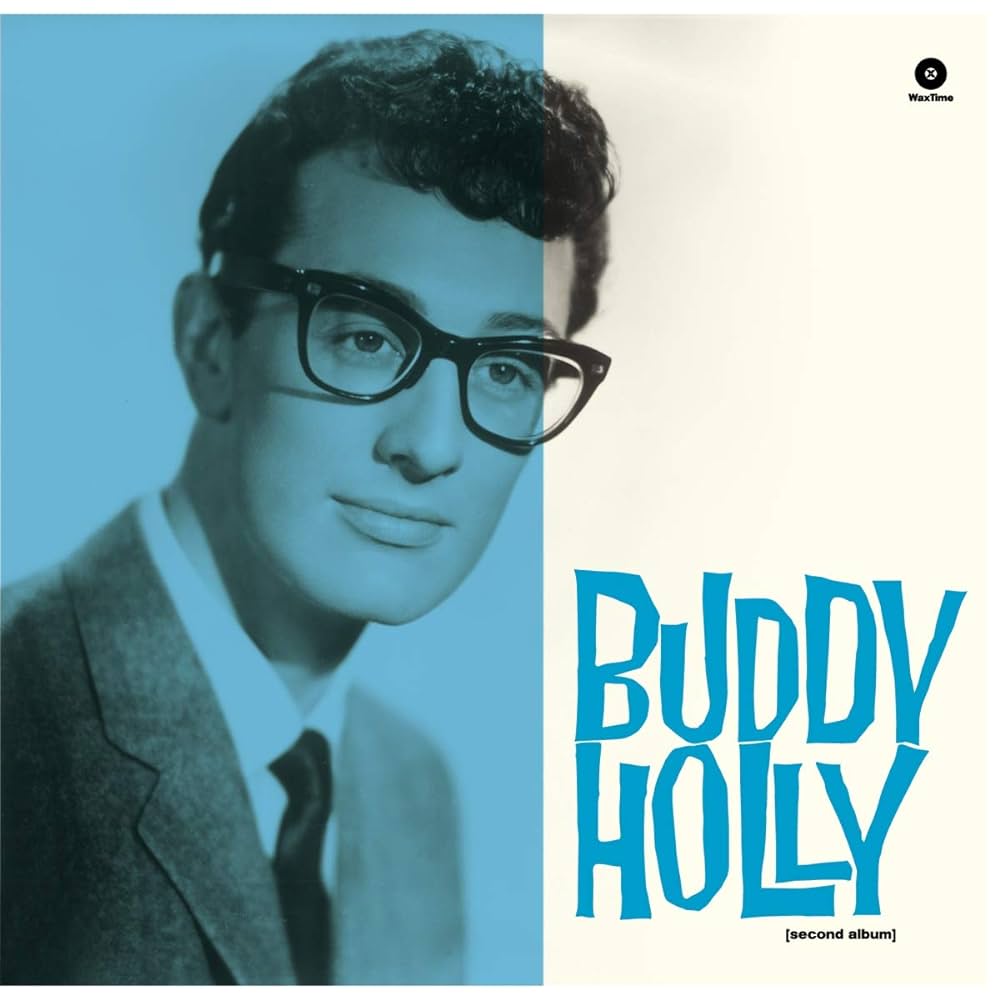 Although the acoustic arrangement The Beatles went for on "I'll Follow The Sun" gives the impression of it being inspired by the burgeoning folk music scene of the time, deeper examination shows this to be a false impression. The melody line and chord progressions used are anything but folk-like, being more akin to the Buddy Holly-style electric guitar/drums arrangement originally used in the 1960 home recording mentioned above. What we see here is a nice blend of both folk and "pop/rock" elements to create a soothing and charming effect. Although the acoustic arrangement The Beatles went for on "I'll Follow The Sun" gives the impression of it being inspired by the burgeoning folk music scene of the time, deeper examination shows this to be a false impression. The melody line and chord progressions used are anything but folk-like, being more akin to the Buddy Holly-style electric guitar/drums arrangement originally used in the 1960 home recording mentioned above. What we see here is a nice blend of both folk and "pop/rock" elements to create a soothing and charming effect.
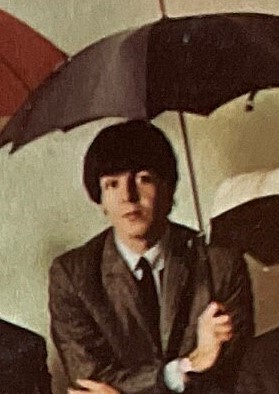 There are two credible interpretations of the lyrics to "I'll Follow The Sun." Some authors suggest that it's not a romantic love song at all. Their analyzation of the lyrics shows it to depict the singer leaving his girl for greener pastures. No reasons are given except that "tomorrow may rain," which may symbolize the stormy trappings of attachment. He knows that the result of his departure is that he will "lose a friend" but, after all, "the time has come" for him to leave. He even crassly presumes upon himself as the Casanova with the line "someday you'll know I was the one." She can't live without him but he apparently can live without her. There are two credible interpretations of the lyrics to "I'll Follow The Sun." Some authors suggest that it's not a romantic love song at all. Their analyzation of the lyrics shows it to depict the singer leaving his girl for greener pastures. No reasons are given except that "tomorrow may rain," which may symbolize the stormy trappings of attachment. He knows that the result of his departure is that he will "lose a friend" but, after all, "the time has come" for him to leave. He even crassly presumes upon himself as the Casanova with the line "someday you'll know I was the one." She can't live without him but he apparently can live without her.
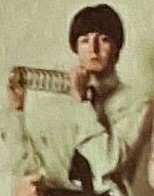 A second view is that the girl is treating the singer badly and he is giving an ultimatum, saying "one day, you'll look to see I've gone." After he leaves, she would then realize that he "was the one" which would satisfyingly explain the line "in the end you'll know." However, as stated above in his 2021 book "The Lyrics," Paul may simply be referring to moving from Liverpool to "someplace where more is happening," his girl (Dot Rhone?) being left by the wayside. A second view is that the girl is treating the singer badly and he is giving an ultimatum, saying "one day, you'll look to see I've gone." After he leaves, she would then realize that he "was the one" which would satisfyingly explain the line "in the end you'll know." However, as stated above in his 2021 book "The Lyrics," Paul may simply be referring to moving from Liverpool to "someplace where more is happening," his girl (Dot Rhone?) being left by the wayside.
American Releases
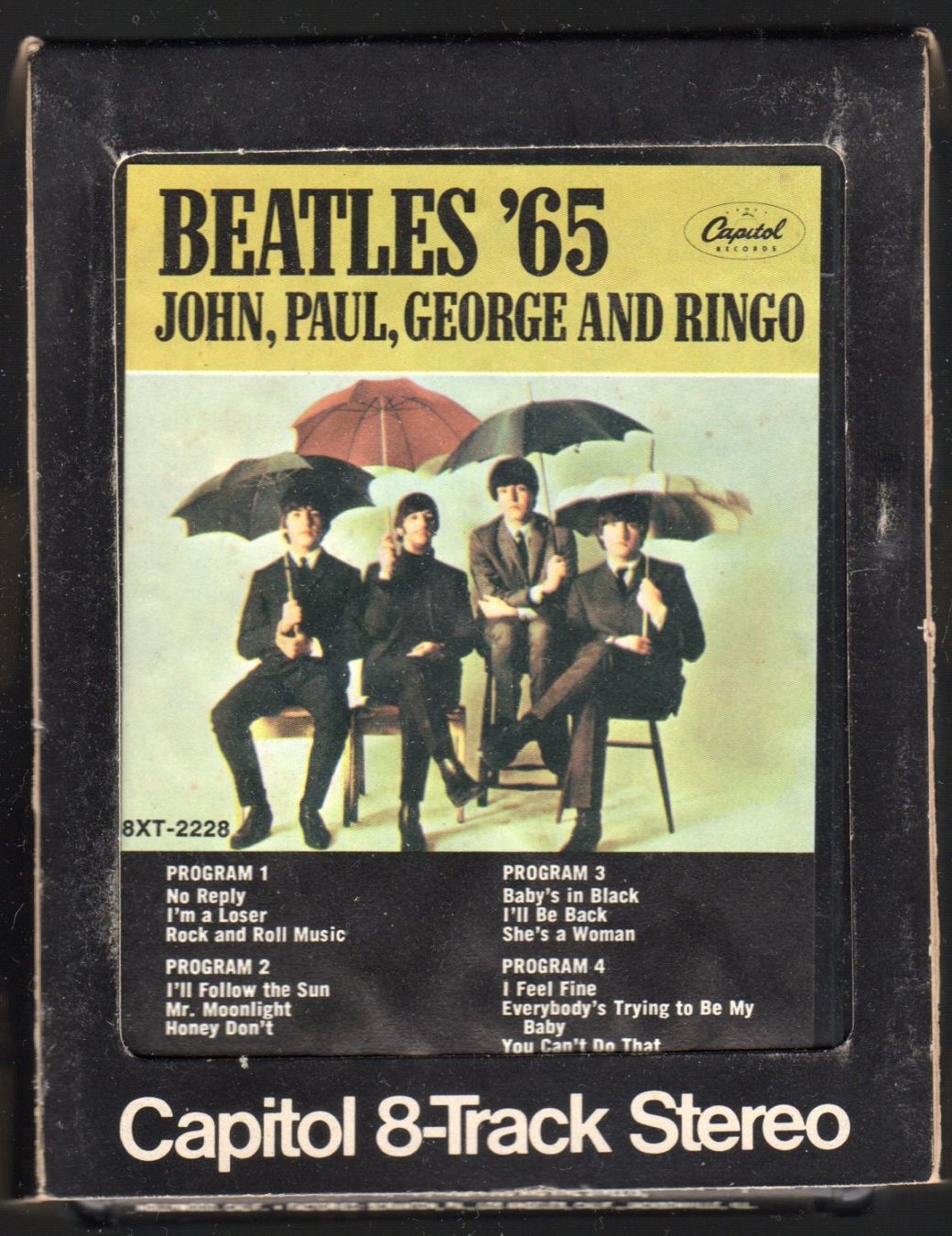 The first US release of "I'll Follow The Sun" was on December 15th, 1964 on the Capitol album "Beatles '65." Nine weeks at the top of the Billboard album chart and three million copies later, the world finally got to hear this gem that was mostly written over six years earlier. "Beatles '65" then appeared as an individual compact disc on January 21st, 2014, both the mono and stereo versions of the album contained on a single CD. The first US release of "I'll Follow The Sun" was on December 15th, 1964 on the Capitol album "Beatles '65." Nine weeks at the top of the Billboard album chart and three million copies later, the world finally got to hear this gem that was mostly written over six years earlier. "Beatles '65" then appeared as an individual compact disc on January 21st, 2014, both the mono and stereo versions of the album contained on a single CD.
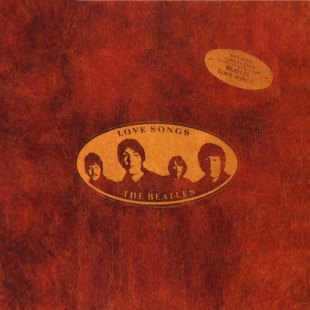 The fourth official Beatles double-album compilation of the '70s was released on October 21st, 1977 entitled "Love Songs." So convincing was the romantic tone of "I'll Follow The Sun" that it landed as the second track on the album after "Yesterday," even though its lyrics possibly suggest otherwise. Interestingly, an additional amount of reverb was added to this track by Capitol. The fourth official Beatles double-album compilation of the '70s was released on October 21st, 1977 entitled "Love Songs." So convincing was the romantic tone of "I'll Follow The Sun" that it landed as the second track on the album after "Yesterday," even though its lyrics possibly suggest otherwise. Interestingly, an additional amount of reverb was added to this track by Capitol.
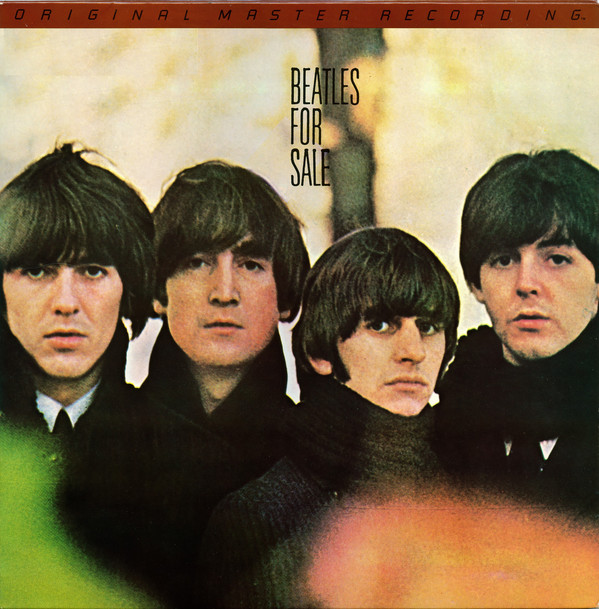 The first time the original British "Beatles For Sale" album was made available in the US was the "Original Master Recording" vinyl edition released through Mobile Fidelity Sound Lab in February of 1987. This album included "I'll Follow The Sun" and was prepared utilizing half-speed mastering technology from the original master tape on loan from EMI. This version of the album was only available for a short time and is quite collectible today. The first time the original British "Beatles For Sale" album was made available in the US was the "Original Master Recording" vinyl edition released through Mobile Fidelity Sound Lab in February of 1987. This album included "I'll Follow The Sun" and was prepared utilizing half-speed mastering technology from the original master tape on loan from EMI. This version of the album was only available for a short time and is quite collectible today.
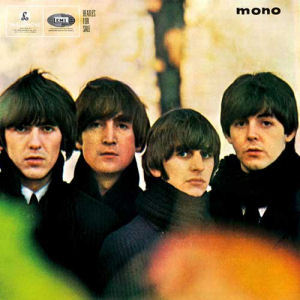 The British "Beatles For Sale" album, which included "I'll Follow The Sun," was released in America on February 26th, 1987 on compact disc, a vinyl edition coming out on July 21st, 1987. While this release was only in mono, the remastered stereo version was released on CD on September 9th, 2009 and on vinyl on November 13th, 2012. The British "Beatles For Sale" album, which included "I'll Follow The Sun," was released in America on February 26th, 1987 on compact disc, a vinyl edition coming out on July 21st, 1987. While this release was only in mono, the remastered stereo version was released on CD on September 9th, 2009 and on vinyl on November 13th, 2012.
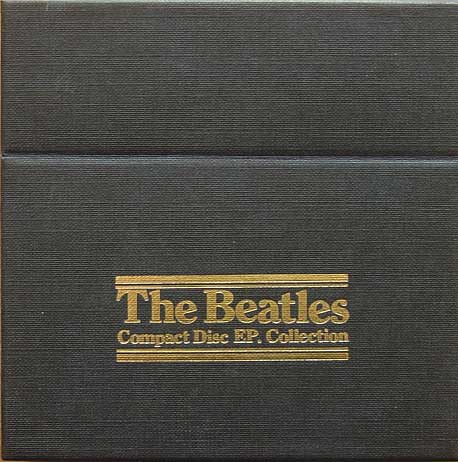 Another mono release in the US was on June 30th, 1992. The box set "Compact Disc EP Collection" came out on this date, "I'll Follow The Sun" being included therein because of it appearing on the EP entitled "Beatles For Sale No. 2," which was originally released on vinyl in Britain on June 4th, 1965. Another mono release in the US was on June 30th, 1992. The box set "Compact Disc EP Collection" came out on this date, "I'll Follow The Sun" being included therein because of it appearing on the EP entitled "Beatles For Sale No. 2," which was originally released on vinyl in Britain on June 4th, 1965.
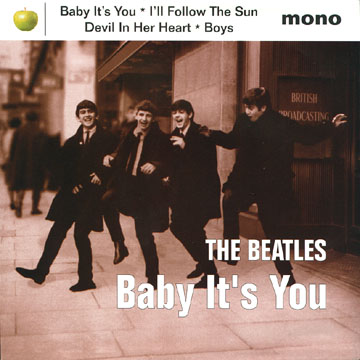 On March 23rd, 1995, Capitol released an EP with four songs The Beatles recorded for the BBC in the early '60s. They named the EP "Baby's It's You," after the title track, which appeared on the recently released "Live At The BBC" album. The three other tracks on the disc, which weren't contained on the album, included a November 17th, 1964 recording of "I'll Follow The Sun" that was originally heard on the November 26th, 1964 British radio show "Top Gear." This EP reached #67 on the Billboard Hot 100 in the US, while it peaked at #7 in Britain. On March 23rd, 1995, Capitol released an EP with four songs The Beatles recorded for the BBC in the early '60s. They named the EP "Baby's It's You," after the title track, which appeared on the recently released "Live At The BBC" album. The three other tracks on the disc, which weren't contained on the album, included a November 17th, 1964 recording of "I'll Follow The Sun" that was originally heard on the November 26th, 1964 British radio show "Top Gear." This EP reached #67 on the Billboard Hot 100 in the US, while it peaked at #7 in Britain.
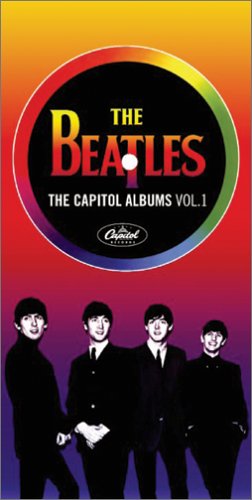 Capitol released the box set "The Capitol Albums, Vol. 1" on November 16th, 2004 to make available the first four Capitol Beatles albums as they were heard in 1964. Both the stereo and mono versions of the original "Beatles '65" album, including "I'll Follow The Sun," are contained in this release, which peaked at #35 in the US Billboard album chart. Capitol released the box set "The Capitol Albums, Vol. 1" on November 16th, 2004 to make available the first four Capitol Beatles albums as they were heard in 1964. Both the stereo and mono versions of the original "Beatles '65" album, including "I'll Follow The Sun," are contained in this release, which peaked at #35 in the US Billboard album chart.
September 9th, 2009 was the release date for the CD box set "The Beatles In Mono," which contains an excellent remastered version of the original mono mix. The vinyl edition of this box set was released on September 9th, 2014.
On November 11th, 2013, the album "On Air - Live At The BBC Volume 2" was released, which featured the version of "I'll Follow The Sun" that previously appeared on the "Baby It's You" EP mentioned above.
 Paul's live performance of "I'll Follow The Sun" during his Amoeba Music show on June 27th, 2007 in Hollywood, California was eventually released on July 12th, 2019 on the album "Amoeba's Gig." This album was released on compact disc and vinyl. Paul's live performance of "I'll Follow The Sun" during his Amoeba Music show on June 27th, 2007 in Hollywood, California was eventually released on July 12th, 2019 on the album "Amoeba's Gig." This album was released on compact disc and vinyl.
 The Kaiserkeller Club, Hamburg, Germany
|
Live Performances
Although The Beatles concentrated mostly on cover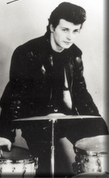 songs in their formative years, "I'll Follow The Sun" did creep into their set lists occasionally as early as 1959. Former drummer Pete Best has stated that he remembers Paul playing the song on piano in between sets at The Kaiserkeller during their first visit to Hamburg, Germany. Having played at this club from October 4th to November 30th, 1960, Paul was said to announce to anyone around, "I've written a song" and then proceed to regale the meager crowd with this tune. songs in their formative years, "I'll Follow The Sun" did creep into their set lists occasionally as early as 1959. Former drummer Pete Best has stated that he remembers Paul playing the song on piano in between sets at The Kaiserkeller during their first visit to Hamburg, Germany. Having played at this club from October 4th to November 30th, 1960, Paul was said to announce to anyone around, "I've written a song" and then proceed to regale the meager crowd with this tune.
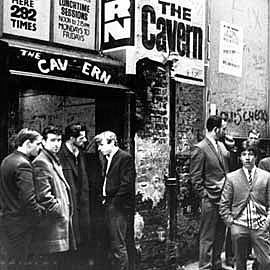 The long hours in Hamburg, as well as their frequent dates at the Cavern Club in Liverpool, brought a band performance of the song to the stage through 1961, while they thereafter put the song on the back burner in favor of more recent compositions. It was not until October of 1964 that it was dusted off and fitted with a new bridge for recording purposes in EMI studios. The long hours in Hamburg, as well as their frequent dates at the Cavern Club in Liverpool, brought a band performance of the song to the stage through 1961, while they thereafter put the song on the back burner in favor of more recent compositions. It was not until October of 1964 that it was dusted off and fitted with a new bridge for recording purposes in EMI studios.
Paul McCartney eventually decided to include "I'll Follow The Sun" in his concert tour set lists, but not until 2004. His "2004 Summer Tour," which was a European concert tour that ran from May 25th in Spain to June 26th in Somerset, England (also including Russia on June 20th), included the song.
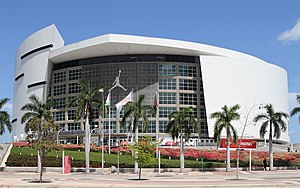 "I'll Follow The Sun" stayed in Paul's set list for his "The 'US' Tour" of 2005, which ran from September 16th at the American Airlines Arena in Miami, Florida to November 30th in Los Angeles, California. This resulted in the concert DVD "The Space Within Us," which also includes the song. "I'll Follow The Sun" stayed in Paul's set list for his "The 'US' Tour" of 2005, which ran from September 16th at the American Airlines Arena in Miami, Florida to November 30th in Los Angeles, California. This resulted in the concert DVD "The Space Within Us," which also includes the song.
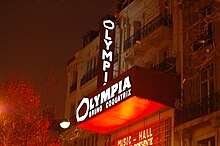 Paul only performed six "secret" shows in 2007, which continued to include "I'll Follow The Sun." These shows included a return to the Olympia Theatre in Paris where The Beatles first performed in January of 1964. Paul only performed six "secret" shows in 2007, which continued to include "I'll Follow The Sun." These shows included a return to the Olympia Theatre in Paris where The Beatles first performed in January of 1964.
McCartney also performed a handful of concert appearances in 2008, such as the Quebec 400th Anniversary in July and the "Friendship First" concert in Tel Aviv, Israel in September, both of which included the song.
Conclusion
 Paul McCartney's role within The Beatles as of late 1964 was still secondary to John Lennon, who seemed to grab the spotlight as lead singer and songwriter. While their trademark harmonies were ever in force throughout these early years, Paul's lead vocal tracks were still kept at three or four per album while John could have up to nine (as on the British album "A Hard Day's Night"). While this supporting role was soon to change, Paul definitely was winning many fans, especially girls, who looked forward to his romantically sung lyrics. And although the lyrics of "I'll Follow The Sun" may not be especially romantic, the effect was still the same. Paul McCartney's role within The Beatles as of late 1964 was still secondary to John Lennon, who seemed to grab the spotlight as lead singer and songwriter. While their trademark harmonies were ever in force throughout these early years, Paul's lead vocal tracks were still kept at three or four per album while John could have up to nine (as on the British album "A Hard Day's Night"). While this supporting role was soon to change, Paul definitely was winning many fans, especially girls, who looked forward to his romantically sung lyrics. And although the lyrics of "I'll Follow The Sun" may not be especially romantic, the effect was still the same.
Song Summary
"I'll Follow The Sun"
Written by: John Lennon / Paul McCartney
Instrumentation (most likely):
- Paul McCartney - Lead Vocals, Bass Guitar (1963 Hofner 500/1)
- John Lennon - Rhythm Guitar (1964 Gibson J-160E), Harmony Vocals
- George Harrison - Lead Guitar (1963 Gretsch 6119 Tennessean)
- Ringo Starr - Knees (his own)
Wriitten and compiled by Dave Rybaczewski
|
IF YOU WOULD LIKE TO MAKE A DONATION TO KEEP THIS WEBSITE UP AND RUNNING, PLEASE CLICK BELOW!
|